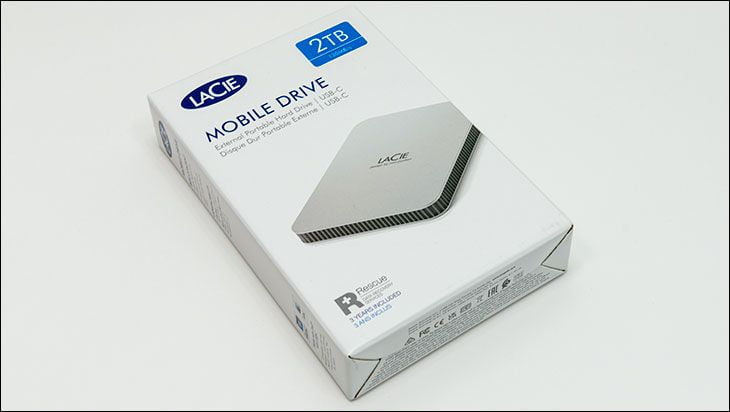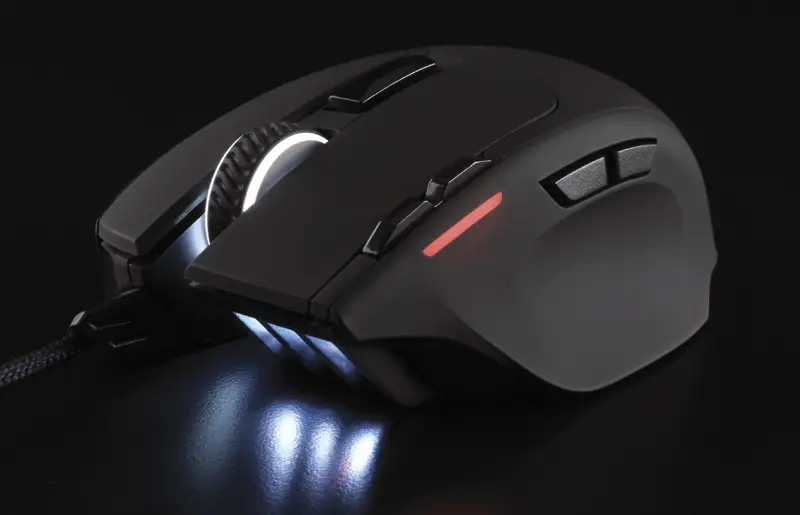 The shipping container which Crucial uses has always been conservatively elegant and the MX200 is no exception. Some may argue that this box is a touch too bland, and if you are used to garishly over the top boxes that some other companies use you may agree, we however think it is darn good. To us this box is eye catching without being an eyesore….and considering we have used, tested, and worked with nearly every model on the market today that is indeed high praise for us.
The shipping container which Crucial uses has always been conservatively elegant and the MX200 is no exception. Some may argue that this box is a touch too bland, and if you are used to garishly over the top boxes that some other companies use you may agree, we however think it is darn good. To us this box is eye catching without being an eyesore….and considering we have used, tested, and worked with nearly every model on the market today that is indeed high praise for us. The accessory list Crucial includes is actually darn good and above average. Not only do you get a 2.5mm adapter to turn the 7mm form-factored MX200 into a more ‘typical’ 9.5mm drive, you also get a serial for Acronis True Image HD. This software solution may not be as fully featured as the full version of Acronis’ True Image application but it will make cloning your old drive to your new MX200 a snap. The only feature that is missing from this accessory list is a 3.5″ adapter plate which makes installing it into a case easier. However, considering the low asking price and the fact a lot of cases now come with 2.5″ drive mounting options this is not the concern it was even a few years ago.
The accessory list Crucial includes is actually darn good and above average. Not only do you get a 2.5mm adapter to turn the 7mm form-factored MX200 into a more ‘typical’ 9.5mm drive, you also get a serial for Acronis True Image HD. This software solution may not be as fully featured as the full version of Acronis’ True Image application but it will make cloning your old drive to your new MX200 a snap. The only feature that is missing from this accessory list is a 3.5″ adapter plate which makes installing it into a case easier. However, considering the low asking price and the fact a lot of cases now come with 2.5″ drive mounting options this is not the concern it was even a few years ago. Moving on to the drive itself, it becomes readily obvious that the conservative shipping container was only a sign of things to come – as the drive itself is very conservative in its aesthetics. To be precise Crucial simply uses an elegant label to distinguish this MX200 model from its predecessor. We have no major issues with this as the drive will be housed inside a PC chassis so flashy labels and the like are usually a waste. Conversely, telling a MX100 from a MX200 is darn simple as that label is large and makes it rather easy to know what drive you have in your hand!
Moving on to the drive itself, it becomes readily obvious that the conservative shipping container was only a sign of things to come – as the drive itself is very conservative in its aesthetics. To be precise Crucial simply uses an elegant label to distinguish this MX200 model from its predecessor. We have no major issues with this as the drive will be housed inside a PC chassis so flashy labels and the like are usually a waste. Conversely, telling a MX100 from a MX200 is darn simple as that label is large and makes it rather easy to know what drive you have in your hand! What is more important than the color or labels used is the materials the SSD manufacture uses for the case itself. Crucial has always used metal and the MX200 is no exception. The only new twist on things is that the case is not held together with screws and instead uses integrated pressure clips to hold the top section to the bottom. Since the PCB itself is attached to one half via screws we have no problems with this change as even if you drop it hard enough to pop the chassis into its two pieces the PCB itself should be protected….and if it is dropped hard enough to damage the PCB anyways a couple screws would not have changed the outcome – a dead drive.
What is more important than the color or labels used is the materials the SSD manufacture uses for the case itself. Crucial has always used metal and the MX200 is no exception. The only new twist on things is that the case is not held together with screws and instead uses integrated pressure clips to hold the top section to the bottom. Since the PCB itself is attached to one half via screws we have no problems with this change as even if you drop it hard enough to pop the chassis into its two pieces the PCB itself should be protected….and if it is dropped hard enough to damage the PCB anyways a couple screws would not have changed the outcome – a dead drive. Internally we can see the MX200 uses a fairly typical architectural layout. One side of the PCB houses 8 of the 16nm MLC NAND ICs and a single 256MB RAM cache IC, while the other has the remaining 8 NAND ICs, the Marvel ‘9189 controller, and the second 256MB RAM cache IC (for a grand total of 512MB – or half a Gigabyte of cache space). This is very similar to what a MX100 would look like as Crucial has not really changed the hardware all that much.
Internally we can see the MX200 uses a fairly typical architectural layout. One side of the PCB houses 8 of the 16nm MLC NAND ICs and a single 256MB RAM cache IC, while the other has the remaining 8 NAND ICs, the Marvel ‘9189 controller, and the second 256MB RAM cache IC (for a grand total of 512MB – or half a Gigabyte of cache space). This is very similar to what a MX100 would look like as Crucial has not really changed the hardware all that much.
Instead what they have changed and improved is the firmware. The new firmware takes all that they learned from the MX100 and M5xx series and creates a new amalgam that has all the performance aspects of the M5xx series with all the capacity of the MX100 series. Now with that being said these 16nm NAND ICs are more from a more mature process and they are faster and more durable than the 16nm NAND ICs in the MX100 series. Basically as with all things, the manufacturing process has been improved upon and the increase in durability and performance from the MX100 series speaks volumes for what can be done when knowledge, experience, and time are accounted for! Of especial note are the rows of small ‘super caps’ that Crucial have included. These capacitors allow the drive to ensure that all resting data is indeed safe and secure in case of sudden power loss. In other words if the lights go out, the chances of a corrupted drive are slim. They are however not zero. This is because the caps are not large enough to flush the ram buffers to the NAND, so any data that is stored here (AKA In Flight Data) will be lost. This ability is what separates ‘enterprise’ grade SSDs from ‘consumer’ grade; however Crucial’s implementation is above average for the consumer marketplace as it can check both levels of the NAND to ensure all the ‘at rest’ data is correct and not corrupt.
Of especial note are the rows of small ‘super caps’ that Crucial have included. These capacitors allow the drive to ensure that all resting data is indeed safe and secure in case of sudden power loss. In other words if the lights go out, the chances of a corrupted drive are slim. They are however not zero. This is because the caps are not large enough to flush the ram buffers to the NAND, so any data that is stored here (AKA In Flight Data) will be lost. This ability is what separates ‘enterprise’ grade SSDs from ‘consumer’ grade; however Crucial’s implementation is above average for the consumer marketplace as it can check both levels of the NAND to ensure all the ‘at rest’ data is correct and not corrupt.











